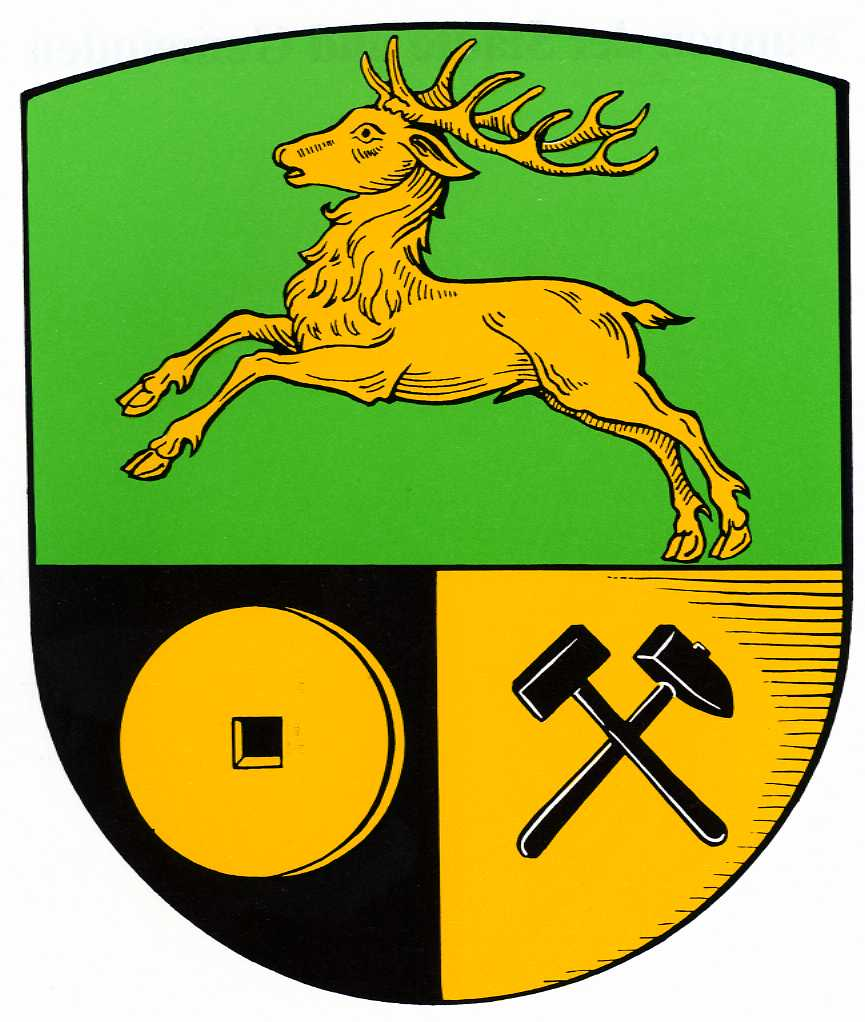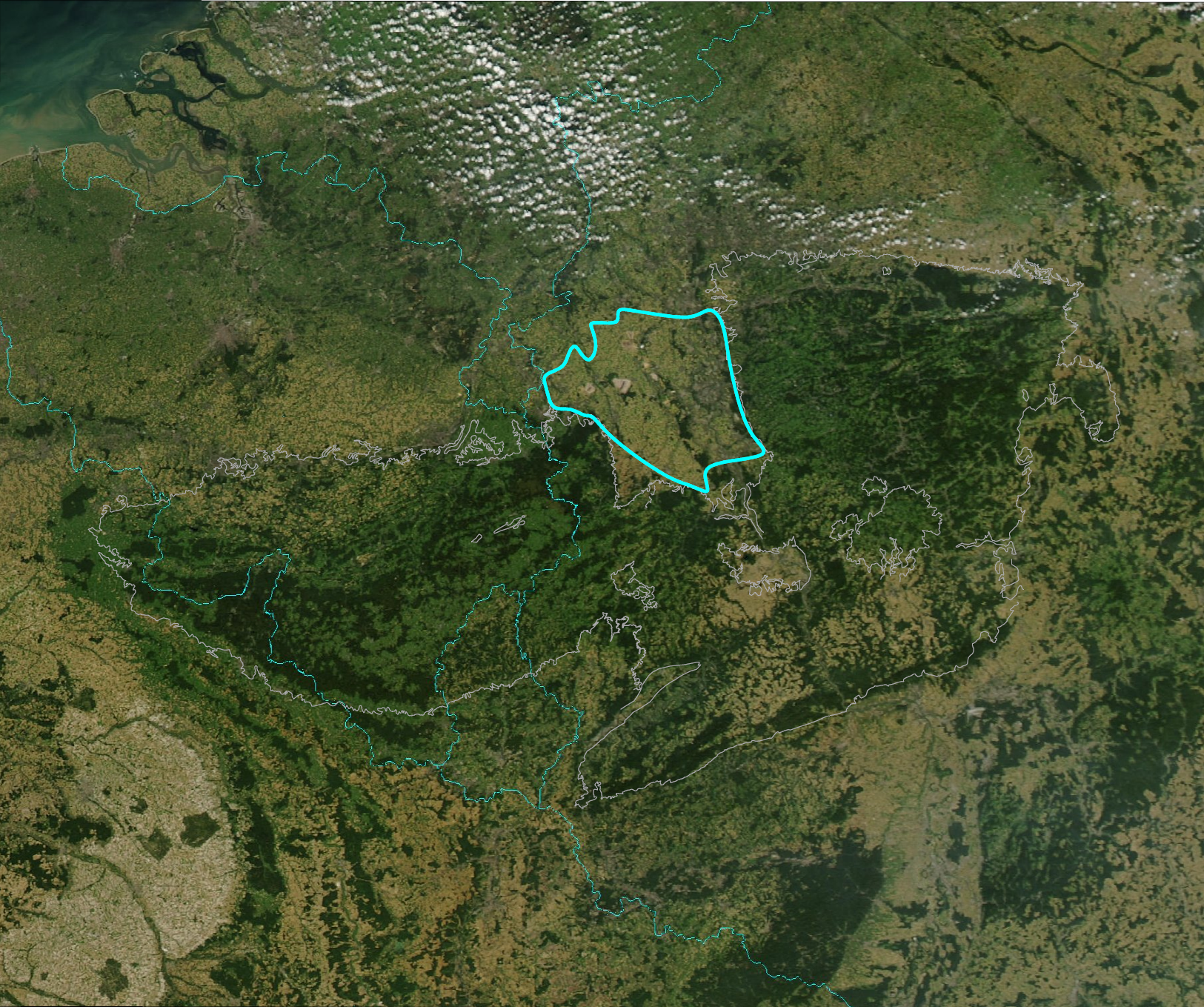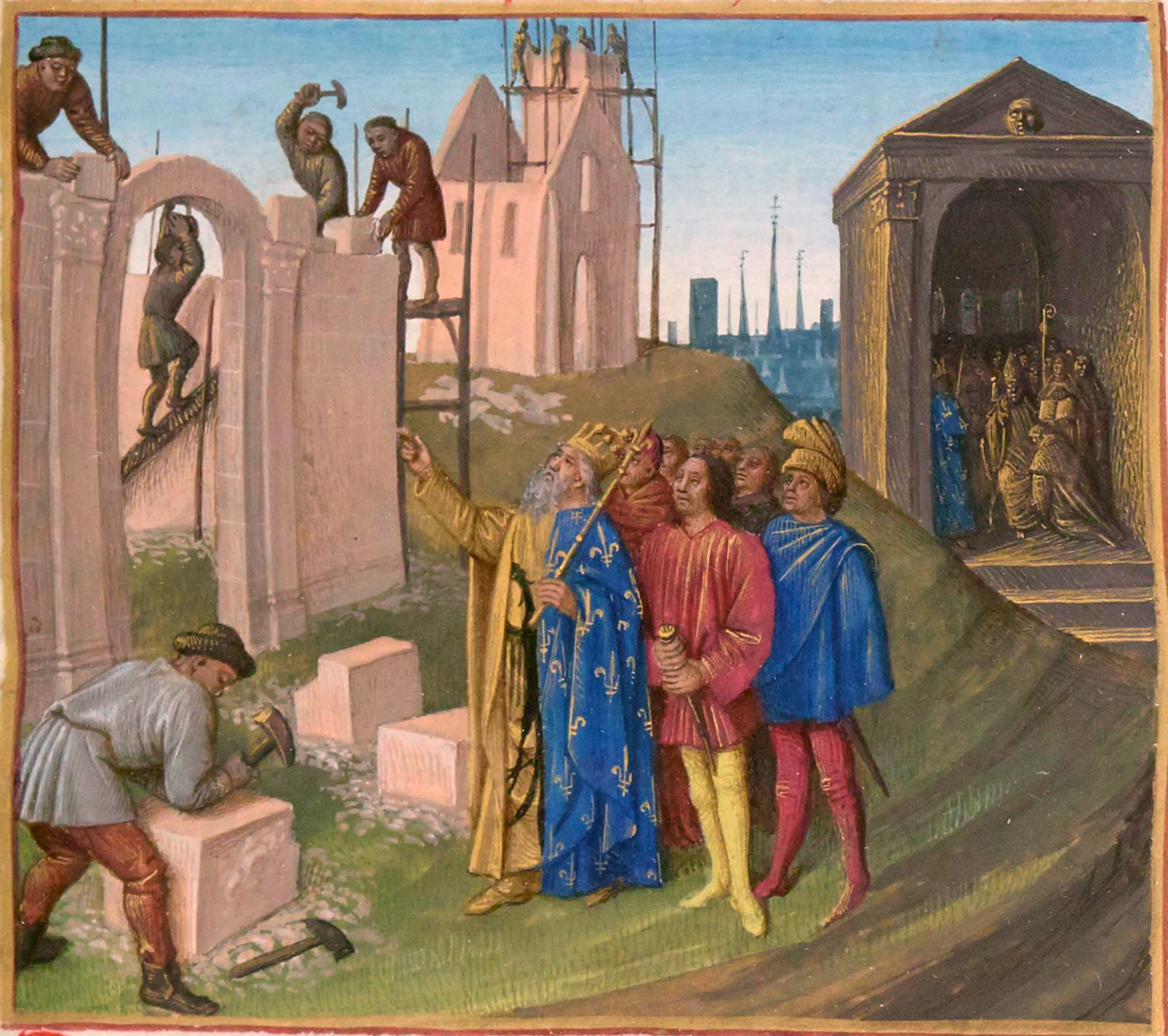|
Aachen District
The district of Aachen (german: link=yes, Städteregion Aachen) is a district in the west of North Rhine-Westphalia, Germany. Neighboring districts are Heinsberg, Düren, Euskirchen, and also the Netherlands province of Limburg and the Belgian province of Liège. Its administrative body is the ''Städteregionsparlament'' ("regional parliament"), headed by the ''Städteregionspräsident'' or "region president" (Tim Grüttemeier ( CDU) since 2019). History Becoming effective on 21 October 2009, the ''Städteregion Aachen'' (literally: "cities region" Aachen) was formed from the former district Aachen (''Kreis Aachen'') and the city of Aachen. This is the first ''Städteregion'' that was formed in North Rhine-Westphalia. Its status is similar to that of the district Hanover (''Region Hannover'') in Lower Saxony, in that the powers of the city of Aachen are slightly less than those of a district-free city (''Kreisfreie Stadt''). The former district Aachen was created in 1975 in ... [...More Info...] [...Related Items...] OR: [Wikipedia] [Google] [Baidu] |
Aachen
Aachen ( ; ; Aachen dialect: ''Oche'' ; French and traditional English: Aix-la-Chapelle; or ''Aquisgranum''; nl, Aken ; Polish: Akwizgran) is, with around 249,000 inhabitants, the 13th-largest city in North Rhine-Westphalia, and the 28th-largest city of Germany. It is the westernmost city in Germany, and borders Belgium and the Netherlands to the west, the triborder area. It is located between Maastricht (NL) and Liège (BE) in the west, and Bonn and Cologne in the east. The Wurm River flows through the city, and together with Mönchengladbach, Aachen is the only larger German city in the drainage basin of the Meuse. Aachen is the seat of the City Region Aachen (german: link=yes, Städteregion Aachen). Aachen developed from a Roman settlement and (bath complex), subsequently becoming the preferred medieval Imperial residence of Emperor Charlemagne of the Frankish Empire, and, from 936 to 1531, the place where 31 Holy Roman Emperors were crowned Kings of the Germans. ... [...More Info...] [...Related Items...] OR: [Wikipedia] [Google] [Baidu] |
Hanover (district)
Hanover Region (german: Region Hannover) is a district in Lower Saxony, Germany. It is bounded by (from the north and clockwise) the districts of Heidekreis, Celle, Gifhorn, Peine, Hildesheim, Hamelin-Pyrmont, Schaumburg and Nienburg. The Hanover Region district has a unique legal status among the districts of Lower Saxony. It includes the city of Hanover (the state capital) which has the same privileges as a city that is not part of a district. As a consequence, the district is much larger in population than any other district of the state. Its administrative body is the regional parliament (german: Regionsparlament, label=none), headed by the regional president (german: Regionspräsident, label=none), which since 2021 is Steffen Krach (SPD). The members of the regional parliament are elected once every five years and the regional president is elected once every eight years in local elections. History The city of Hanover was not part of the district until 2001, when the old H ... [...More Info...] [...Related Items...] OR: [Wikipedia] [Google] [Baidu] |
Stolberg (Rhineland)
Stolberg (, Ripuarian: ) is a town in North Rhine-Westphalia, Germany. It has a long history as an industrial town and belongs to the district Aachen and the lower district court of Eschweiler. Geography Stolberg is located approximately 5 km east of Aachen in a valley at the fringes of the Eifel which begins in the East with the Hürtgenwald and in the South in the municipality of Monschau. It borders Eschweiler in the north and the Aachen city district of Eilendorf in the west. The core of Stolberg is commonly divided into Unterstolberg (''Lower Stolberg'') and Oberstolberg (''Upper Stolberg'') which includes most of the old parts of Stolberg. Other parts of Stolberg are Atsch, Büsbach, Donnerberg, Münsterbusch. In addition the villages of Breinig, Dorff, Gressenich, Mausbach, Schevenhütte, Venwegen, Vicht, Werth, and Zweifall. History Stolberg is first mentioned in documents from the 12th century. It became an important centre of brass production when Protestant br ... [...More Info...] [...Related Items...] OR: [Wikipedia] [Google] [Baidu] |
Duchy Of Jülich
The Duchy of Jülich (german: Herzogtum Jülich; nl, Hertogdom Gulik; french: Duché de Juliers) comprised a state within the Holy Roman Empire from the 11th to the 18th centuries. The duchy lay west of the Rhine river and was bordered by the Electorate of Cologne to the east and the Duchy of Limburg to the west. It had territories on both sides of the river Rur, around its capital Jülich – the former Roman ''Iuliacum'' – in the lower Rhineland. The duchy amalgamated with the County of Berg beyond the Rhine in 1423, and from then on also became known as ''Jülich-Berg''. Later it became part of the United Duchies of Jülich-Cleves-Berg. Its territory lies in present-day Germany (part of North Rhine-Westphalia) and in the present-day Netherlands (part of the Limburg province), its population sharing the same Limburgish dialect. History In the 9th century a certain Matfried was count of Jülich (pagus Juliacensis). The first count in the gau of Jülich in Lower Lorrai ... [...More Info...] [...Related Items...] OR: [Wikipedia] [Google] [Baidu] |
Lower Rhine Bay
The Lower Rhine Bay (german: Niederrheinische Bucht), sometimes called the Lower Rhine Bight,Luttig, G.W. (ed.), ''General Geology of the Federal Republic of Germany'', Nagel u. Obermiller, 1980, pp. 29 and 44. is a lowland plain in the German state of North Rhine-Westphalia that cuts into the Rhenish Massif. From a natural region perspective it is a major unit group which includes the Cologne Lowland around the city of Cologne as well as the land lying to the west and, in a clearly narrower strip of land, to the east of the central Cologne plain. That said, the term "Cologne Bay" or "Cologne Bight" is occasionally used, ''pars pro toto'', for the entire region. The Lower Rhine Bay covers an area of 3,584.4 km².Meynen, E. and Schmithüsen, J., ''Handbuch der naturräumlichen Gliederung Deutschlands.'' Bundesanstalt für Landeskunde, Remagen/Bad Godesberg, 1953–1962 (9 issues in 8 books, updated map at 1:1,000,000 scale with major units, 1960). Location and boundaries T ... [...More Info...] [...Related Items...] OR: [Wikipedia] [Google] [Baidu] |
Eifel
The Eifel (; lb, Äifel, ) is a low mountain range in western Germany and eastern Belgium. It occupies parts of southwestern North Rhine-Westphalia, northwestern Rhineland-Palatinate and the southern area of the German-speaking Community of Belgium. The Eifel is part of the Rhenish Massif; within its northern portions lies the Eifel National Park. Geography Location The Eifel lies between the cities of Aachen to the north, Trier to the south and Koblenz to the east. It descends in the northeast along a line from Aachen via Düren to Bonn into the Lower Rhine Bay. In the east and south it is bounded by the valleys of the Rhine and the Moselle. To the west it transitions in Belgium and Luxembourg into the geologically related Ardennes and the Luxembourg Ösling. In the north it is limited by the Jülich-Zülpicher Börde. Within Germany it lies within the states of Rhineland-Palatinate and North Rhine-Westphalia; in the Benelux the area of Eupen, St. Vith and Luxemb ... [...More Info...] [...Related Items...] OR: [Wikipedia] [Google] [Baidu] |
Aachen Aerial View 10-2017 Img2
Aachen ( ; ; Aachen dialect: ''Oche'' ; French and traditional English: Aix-la-Chapelle; or ''Aquisgranum''; nl, Aken ; Polish: Akwizgran) is, with around 249,000 inhabitants, the 13th-largest city in North Rhine-Westphalia, and the 28th-largest city of Germany. It is the westernmost city in Germany, and borders Belgium and the Netherlands to the west, the triborder area. It is located between Maastricht (NL) and Liège (BE) in the west, and Bonn and Cologne in the east. The Wurm River flows through the city, and together with Mönchengladbach, Aachen is the only larger German city in the drainage basin of the Meuse. Aachen is the seat of the City Region Aachen (german: link=yes, Städteregion Aachen). Aachen developed from a Roman settlement and (bath complex), subsequently becoming the preferred medieval Imperial residence of Emperor Charlemagne of the Frankish Empire, and, from 936 to 1531, the place where 31 Holy Roman Emperors were crowned Kings of the Germans. ... [...More Info...] [...Related Items...] OR: [Wikipedia] [Google] [Baidu] |
Burtscheid
Burtscheid ( la, Porcetum) is a district of the city of Aachen, part of the Aachen-Mitte Stadtbezirk. It is a health resort. History It was inhabited since ancient times by Celts and Romans, who were attracted by the presence of hot springs. Burtscheid Abbey was founded here in 997 by emperor Otto III, with Gregor von Burtscheid as its first abbot. It was finished in 1016–1018. From 1816 Burtscheid was the administrative capital of the district of Aachen. In 1897 Burtscheid became part of the city of Aachen. During World War II, the German Nazis established and operated a forced labour camp in the district. Notable people * Egidius Jünger (born 1833), Second Bishop of Seattle *Armin Laschet Armin Laschet (; born 18 February 1961) is a German politician who served as Minister President of North Rhine-Westphalia from 27 June 2017 to 26 October 2021. He served as Leader of the Christian Democratic Union (CDU) from 22 January 2021 to 3 ... (born 1961), German politician ... [...More Info...] [...Related Items...] OR: [Wikipedia] [Google] [Baidu] |
Eschweiler
Eschweiler (, Ripuarian: ) is a municipality in the district of Aachen in North Rhine-Westphalia in Germany on the river Inde, near the German-Belgian-Dutch border, and about east of Aachen and west of Cologne. History * Celts (first ore mining) and Romans (roads and villae rusticae). * 828 First mentioned by Einhard, the biographer of Charlemagne. * 1394 Coal mining first mentioned. * For some centuries part of the Duchy of Jülich. * 1678 Completely destroyed except one house and the valuable leather Pietà. * 1794 To France. * 1800 French municipal rights and capital of the Canton of Eschweiler in the French Département de la Roer. * 1816 To Prussia. The French Cantons of Burtscheid and Eschweiler are put together to form the Prussian Kreis Aachen. * 1838 Foundation of the first joint stock company in the then Kingdom of Prussia: Eschweiler Bergwerksverein (i.e. Eschweiler Coal Mining Company) EBV. * 1858 Prussian municipal rights. Its quarters Hehlrath, Kinzweil ... [...More Info...] [...Related Items...] OR: [Wikipedia] [Google] [Baidu] |
Cantons Of France
The cantons of France are territorial subdivisions of the France, French Republic's Departments of France, departments and Arrondissements of France, arrondissements. Apart from their role as organizational units in relation to certain aspects of the administration of public services and justice, the chief purpose of the cantons today is to serve as Constituency, constituencies for the election of members of the representative assemblies established in each of France's territorial departments (Departmental council (France), departmental councils, formerly general councils). For this reason, such elections were known in France as "cantonal elections", until 2015 when their name was changed to "departmental elections" to match the departmental councils' name. As of 2015, there were 2,054 cantons in France. Most of them group together a number of Communes of France, communes (the lowest administrative division of the French Republic), although larger communes may be included in mo ... [...More Info...] [...Related Items...] OR: [Wikipedia] [Google] [Baidu] |
Independent City
An independent city or independent town is a city or town that does not form part of another general-purpose local government entity (such as a province). Historical precursors In the Holy Roman Empire, and to a degree in its successor states the German Confederation and the German Empire, so-called " free imperial cities" (nominative singular ''freie Reichsstadt'', nominative plural ''freie Reichsstädte'') held the legal status of imperial immediacy, according to which they were not subinfeudated to any vassal ruler and were instead subject to the authority of the Emperor alone. Examples included Hamburg, Bremen, and Lübeck, along with others that gained and/or lost the privileges of immediacy over the course of the Empire's history. National capitals A number of countries have made their national capitals into separate entities. Federal capitals In countries with a federal structure, the federal capital is often separate from other jurisdictions in the country, and fre ... [...More Info...] [...Related Items...] OR: [Wikipedia] [Google] [Baidu] |







